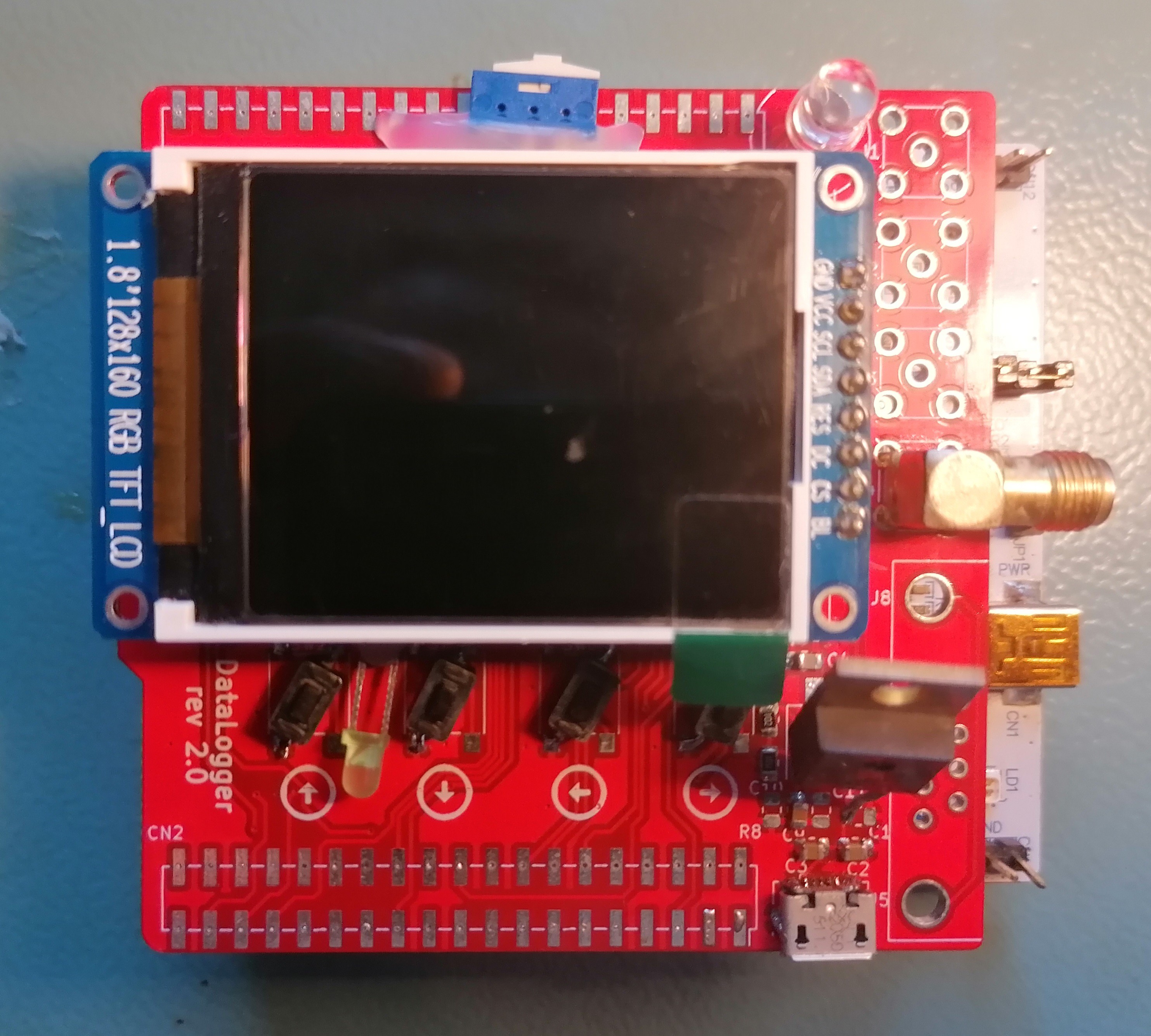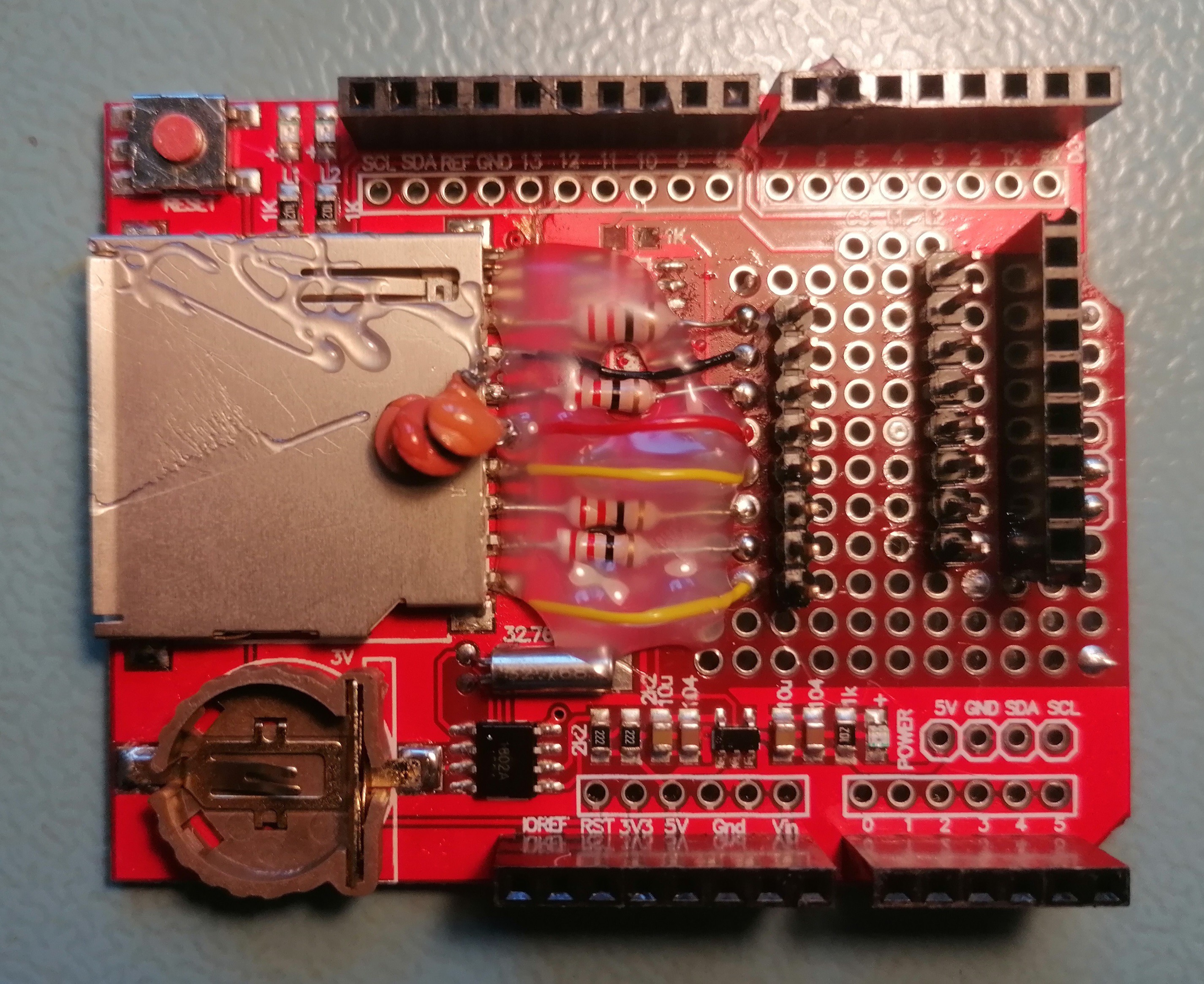I have made a new version and it was working (well, not all of it was/is working but major parts yes). This is also the first time the project has its PCB so it looks much better than previous version.
What you see is NUCLEO board (white PCB at the bottom), my PCB (red one) and the LCD with its own blue PCB (LCD comes with this blue PCB but I think that maybe I will desolder it and solder it directly into my board, I don't know).
The NUCLEO and the logger PCB are connected via SMD pin headers that.. I forgot to buy. I've used standard troug-hole pin headers, but I didn't solder them quite well (it's a different footprint) and that make a lot of problems with missing connections. I've sped three hours at least on that.
ESP8266 and STM32 talsk to each other via UART, that's make me happy, that was my main goal for this version. I can dim the LCD, although the algorithm is rather primitive. Buttons works too. I will add debouncing in the software later.
The LCD doesn't work now, probably because some pins did unconnected again, but it was working so I know that HW design is good. Same with SD card.

I won't have access to my tools, so I made a small PCB with an SD card and a connector for the LCD display to overcome the current problems with the PCB. It's based on the existing Arduino shield, fun fact it's red too.

I tried to use a lot of modern features in the code (which doesn’t compile, by the way). I have unit tests (Google Test, Google Mock), static analysis (Cppcheck), and dynamic analysis (Valgrind, though it doesn’t really make sense for this project, but the diagrams look cool). I’ve got test coverage, and I’ve also added docs and docs coverage. The downside is that CMake (yes, I’m using CMake now too!) looks like garbage. I’ll have to take a look at that.
I’ve switched to Visual Studio Code. It’s 2024, no more Eclipse-based garbage.
What do I plan?
I want to get rid of the NUCLEO board and use the STM32 chip directly on my board. This will solve the connector issues and make the device smaller and cheaper.
My second goal is to use Grafana for result visualization. It’s an awesome open-source tool for displaying measurements, with a web API, and it can run on a Raspberry Pi.
 Robert Gawron
Robert Gawron
Discussions
Become a Hackaday.io Member
Create an account to leave a comment. Already have an account? Log In.